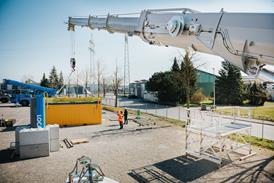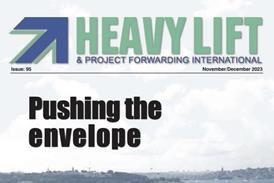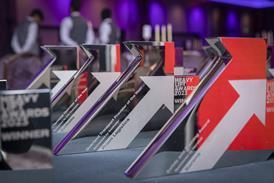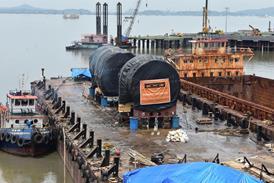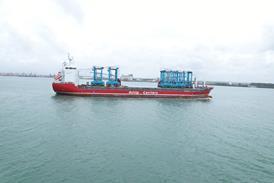With the 2020 deadline looming for the IMO’s sulphur cap, the industry is still uncertain about the best path to take for compliance. One thing seems to be assured, however, and that is price hikes for shippers and beneficial cargo owners.

By Sophie Barnes
On January 1, 2020, the shipping industry faces a watershed moment as the International Maritime Organization’s (IMO) 2020 sulphur emissions regulations come into force, cutting the allowable sulphur content in marine fuel from 3.5 percent to 0.5 percent.
Recent calls for a phased implementation of the sulphur cap were supported by shipping groups and the USA, which asked for an “experience- building phase”, failed to gain traction at the IMO’s Marine and Environment Protection Committee (MEPC) meetings in October.
The committee described the proposals as vague and asked delegates for new proposals on how to enhance the provisions of the regulation with regard to quality and possible lack of availability of fuel at the next MEPC meetings in May next year. The MEPC meetings did, however, adopt a carriage ban of non-compliant fuel oil to support the implementation of the cap.
Unease among shippers
A survey conducted by global shipping consultancy Drewry revealed that there is considerable unease among global shippers/beneficial cargo owners (BCO) and freight forwarders ahead of the implementation of this regulatory game-changer.
Respondents expressed particular uncertainty about carriers’ methods of fuel cost recovery, said Drewry.
More than half of all respondents (56 percent) stated that they did not consider their service providers’ existing approaches as either fair or transparent.
Despite several shipping lines – including Maersk Line, MSC and CMA CGM – announcing their bunker surcharge policies, four in every five of the shippers/BCOs participating in the survey stated that they had yet to receive clarity from their providers as to how the fuel cost increases, set to accompany the 2020 regulatory change, would be met.
Cost of compliance
The level of uncertainty expressed in the survey is so large that nobody was able to provide a confident forecast of the cost of compliance; the only certainty is that the extra cost will run into billions of dollars globally come 2020.
Based on independent predictions about future prices, low-sulphur marine fuel prices per tonne will be 55 percent higher than current high-sulphur fuels; Drewry believes that the probable worst-case scenario is that fuel costs (paid by carriers) and fuel surcharges (paid by shippers) in global container shipping will increase by 55-60 percent in January 2020.
The full implementation picture is far from complete. Further questions have been raised repeatedly about the availability, safety and compatibility of compliant fuels.
The anticipated shift in demand from heavy fuel oil (HFO) to low sulphur marine gasoil (MGO) is expected to have a significant impact on the bunker supply chain. At the moment, switching to MGO requires a small upfront investment from owners but, after the implementation deadline, the effect on the supply and demand balance is expected to cause MGO prices to rise.
Having spoken with a number of leading multipurpose carriers, there is a general consensus that MGO prices could be some 20-30 percent higher than HFO.
Availability of compliant fuel
Further still, concerns have been raised about whether there will be a sufficient supply of compliant product to meet demand.
Amid unease about how soon and how strict policing of the new rules will be, plus calls for a phased introduction to the cap, refiners have little idea what the true demand for MGO in 2020 will be. According to ExxonMobil, buyers should expect price spikes if there is a shortfall.
Technology to convert fuel oil into distillates costs approximately USD1 billion per refinery, said ExxonMobil, adding that it can also take up to seven years to implement. The response to a lack of supply will therefore be slow.
It also highlighted the different handling characteristics of HFO and MGO. “Vessels, as well as storage and bunkering infrastructure, will all need investment to accommodate the shift in HFO/MGO demand.
While this will be of less concern at major hubs, buyers can expect the supply of compliant product in smaller ports to be decidedly less assured, at least initially,” said ExxonMobil.
In releasing free guidance on implementation planning, the International Chamber of Shipping (ICS) said that the primary responsibility for ensuring that compliant and compatible fuels will be available rests with oil suppliers, as well as those IMO member states that collectively agreed to implement this major regulatory change in 2020.
Guy Platten, ICS secretary general, explained: “Shipping companies may need to start ordering compliant fuels from as early as the middle of 2019, and they are strongly recommended to commence developing implementation plans as soon as possible.”
Alternatives to MGO
While MGO is expected to be the path that most shipping lines take to satisfy the new requirements, there are still alternatives, such as switching to liquefied natural gas (LNG) or installing exhaust scrubbers.
Earlier this year, three of the marine sector’s major technology companies – WinGD, Wärtsilä and GTT – agreed to collaborate in making the use of LNG fuel a viable option for shipowners and operators.
Meanwhile, exhaust gas cleaning systems (EGCS), also known as scrubbers, are seen as a more economically viable solution for shipowners. According to North P&I, the capital expenditure for scrubbers is typically USD3-5 million per ship, with the ‘payback period’ also expected to be reasonably short.
The systems effectively wash the exhaust gas to remove the sulphur dioxides; post-2020, vessels operating an EGCS can legally continue to burn fuels with a sulphur content greater than 0.5 percent.
Shipping companies may need to start ordering compliant fuels from as early as the middle of 2019.
- Guy Platten, ICS
With some major players opting to use scrubbers as part of their IMO 2020 implementation strategy, their popularity has also seen an upward trajectory.
Italy’s Grimaldi Group and the Netherlands-headquartered Spliethoff have joined other leading companies from the commercial shipping and cruise industries to form the Clean Shipping Alliance 2020 (CSA 2020), with the aimof promoting the benefits of both open and closed-loop EGCS.
Capacity for scrubber installation
Looking beyond the 2020 implementation deadline, the Exhaust Gas Cleaning System Association (EGCSA) expects shipowners to spend more than USD20 billion on scrubbers over the next five years.
However, shipyard capacity for scrubber installation is now extremely tight. There have also been several issues raised about the longevity of scrubber systems.
North P&I explained that concerns about maintenance demands and reliability could result in periods of non- compliance, while future legislation on wastewater effluent discharge standards could threaten the use of scrubber systems on vessels.
The availability of high sulphur fuels post-2020 is another unknown, as some refineries could divert their attention elsewhere.
The next major disruption
While the 2020 targets are perhaps the biggest regulatory change to date, the industry has already started thinking about the next major disruption – the 2050 greenhouse gas (GHG) reduction strategy.
With a target to cut GHG emissions by at least 50 percent by 2050, 34 maritime ceos have signed a call for action to support the decarbonisation of shipping. Slated to be an even bigger challenge than Sulphur 2020, the shipping industry needs to prepare for further investments in research and technology in order to meet the GHG targets.
This article is taken from HLPFI's November/December 2018 edition. If you would like to receive a copy of the latest issue, please contact editorial@heavyliftpfi.com



